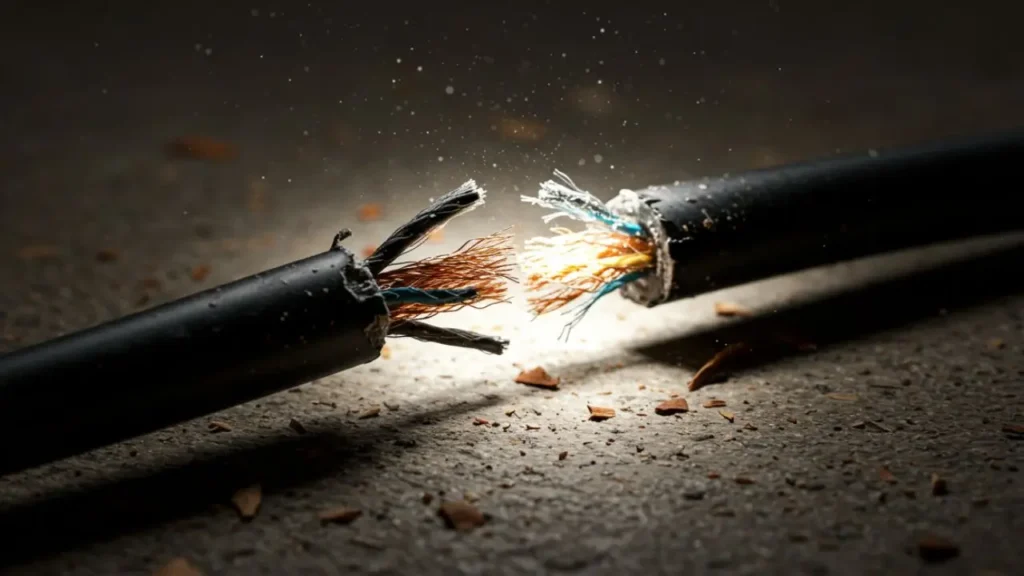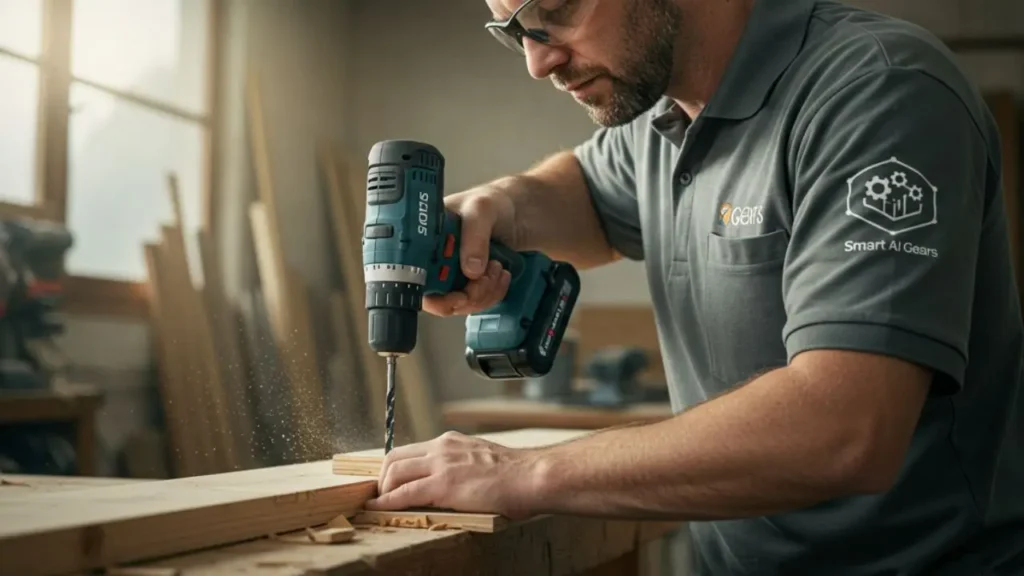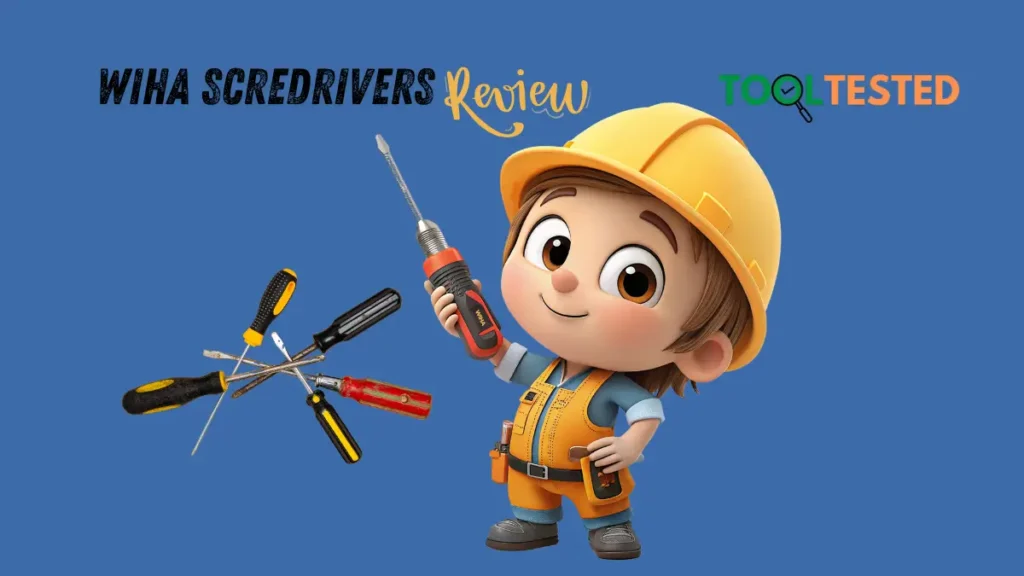Quick Summary: Power Tool Safety: 8 Big Mistakes to Not Make
- Content Type: Guide
- Last Updated: July 1, 2025
- Fact-Checked By: Doctor Sabir, Author of this post.
- Best For: New People: Anyone who is new to using power tools. DIY Home Users: People who do projects at home and want to be safe. Workshop Owners: To teach their workers about safety.
- What’s Great: Simple Rules: The guide has 8 very simple rules that are easy to remember. Real Story: It has a real story that shows why safety is so important. Tells You "Why": It does not just give rules, it tells you why you must follow them.
- What’s Not: General Guide: This is a guide for all power tools, not for one special tool. You must still read the manual for your own tool.
- Affiliate Link Present: Yes
Every year, the OSHA numbers show a bad story. Many thousands of people get hurt from power tools. If you know the simple rules for power tool safety, you can have a safe day. If you do not, you can have a very bad injury. It is simple. Many users ask this question: “What is never to be engaged when using power tools?”
This guide is for you. It does not matter if you are a professional worker, a DIY person at home, or just a hobbyist. We all know a story of someone getting hurt. Maybe a person took the safety guard off an angle grinder for just one “fast” cut. My job here is to help you understand how to be safe. So you can avoid accidents, do better work, and make your tools live a long time.
Let us talk about the important safety rules you must not break. From how to hold the tool, to what safety clothes to wear, this guide will tell you everything for doing the job right and staying safe.
Disclaimer
Important Note
The things I write in this blog post, “Power Tool Safety: 8 Big Mistakes to Not Make,” are from my experience and for helping you. I share this information in good faith to help you be safe. But I cannot give a guarantee that everything is 100% correct for your special situation.
The use of power tools is always dangerous. This guide is my advice, but it is not a replacement for professional training or the official manual from your tool’s company.
Please know, I do not know what tool you have. Maybe your tool is different. This guide is general. So, I ask you with respect, please use your own good sense when you work. The most important thing is to always read the safety manual that comes with your tool. This is very important if it is your first time using it.
Because of this, Smart AI Gears and I cannot be responsible if any accident or problem happens from using this information. When you read this blog, you agree that you are using the information at your own risk.
Affiliate Disclaimer
I have added safety glasses in this blog post for you to check it out. That is an ‘affiliate link’. This just means if you click one it and then buy, I get a very small money from the shop.
This does not cost you any extra money at all. The price is the same for you.
Image Information
I want to be honest with you. I used AI to make these pictures. Because I did not take the right photos myself to show the safety ideas clearly for this guide. I hope they help you understand the points better.
Top 8 Big Mistakes to Avoid with Power Tools
Good power tool safety starts when you learn the things you should not do. About 400,000 people go to the hospital each year from tool accidents. By following these eight rules, you can stay safe
1. Do Not Use the Trigger Lock When the Tool is Working
If your tool has a trigger lock, it is only for when the tool is off. It is not for when you are cutting or drilling. If you use it when the tool is running, you cannot stop it fast in an emergency. You must always keep your finger on the trigger. This gives you control.
2. Do Not Wear Loose Clothes or Jewelry
This is a very important rule for any tool that has spinning parts. A loose shirt sleeve, a necklace, or long hair can get caught very fast. The machine can pull you in before you know it. Data shows that almost 4 of 10 factory injuries are because of this. So, before you start, tie your hair back and check for any loose clothes.
3. Do Not Take Off the Safety Guard
If your tool has a safety guard, it is there for a big reason: to keep you away from the sharp, moving parts. The guards are made to be strong. Taking the guard off is a very bad idea. It is like taking the seatbelt out of your car. You can see how to use guards the right way in our review of the Makita 9557NB Angle Grinder.
4. Do Not Use Power Tools in Wet Places
This should be easy to understand, but people still do it. Do not use your tool in the rain or on a wet floor, unless the tool is special for water (most are not). This is for tools with a cord and for cordless tools too. Water and electricity is a very dangerous mix.
5. Do Not Use a Two-Hand Tool with One Hand
Some strong tools, like a big hammer drill, need two hands to hold them. The tool is designed this way so you can control its power. If your tool is made for two hands, you must use two hands. If you need to hold the material you are cutting, use clamps or a vise. Do not use your other hand. That is the only safe way.
6. Do Not Use a Broken Tool

This rule is maybe the most important. If you see any problem with a tool—a crack in the body, a loose part, a bad wire—stop. Do not use it. I remember a man in my workshop. He was in a hurry. He used a drill with a wire that was a little broken. A small spark came out. He was lucky, but he could not work for a long time. I always think, what if it was worse? What about his family? The people who need him? So, always check your tool before you use it. It takes one minute, but it can save you from a big accident.
7. Do Not Work Without Safety Gear (PPE)
Your safety gear, or PPE, is your protection. What gear you need depends on the tool and the job. Maybe you need safety glasses. Maybe you need hearing protection, a mask for dust, or gloves. Good power tool safety means you must use the right gear for the right risk. For more on this, you can see our Work Wear & Safety section.
8. Do Not Use Tools When You Are Not Focused
A power tool needs all your attention. Do not use it if you are tired or angry. Put your phone away. If someone talks to you, turn the tool off first, then look at them. An accident can happen in just one second if you are not focused.
Why These Rules Are So Important
The number of power tool accidents is very high. In the USA, they cause more than 100,000 visits to the hospital every year. The sad thing is, we can prevent most of these accidents. They can be very painful and often lead to significant expenses. This shows why good power tool safety is not a choice, it is a need. So when you work, you should always think, “what is never to be engaged when using power tools?” to keep your mind on safety.
How to Stop Common Injuries
An injury from a power tool can be very bad. In the construction world, tools cause almost 200 deaths every year. Losing a finger or getting an electric shock are some of the worst things that can happen.
Understand Your Tool’s Design
Companies put safety parts on tools for a good reason. You must not remove them. A guard or a safety switch is not an extra part. It is a main part of the tool. They are there because these tools are strong and can be dangerous. These safety parts are the most important part of the tool’s design for power tool safety.
How to Not Get Caught in a Tool
Getting your clothes or hair caught in a machine is a very bad thought. To stop this, always check for loose things before you begin work. If you are fixing a tool, use proper lockout/tagout steps. The best safety is to remove the danger. If you cannot, use safety controls. Your last defense is your PPE.
Special Rules for Dangerous Places
The general rules are for normal work. But some places have special dangers. In these places, you need to know extra rules to stop a very bad accident.
Working Near Flammable Things
If you work near things that can catch fire, you must be very, very careful. Normal tools from iron and steel can make sparks. One spark can be hotter than 3,600°F. This is hot enough to start a fire with gas or some dusts. In these places, you must use special tools that do not make sparks.
Using Tools in Damp or Bad Locations
Do not use a normal electric tool in a damp place. Only if it is made for that. If you use hydraulic tools, check they have the correct fire-resistant fluid. And if you work in wet conditions, you must plug your tool into a GFCI (Ground Fault Circuit Interrupter). This little thing can save your life from an electric shock.
Bad Maintenance That Causes Accidents
Taking care of your tools is as important as using them safe. It is a big part of total power tool safety. A tool that is not cared for is a danger.
Do Not Use Water to Clean Tools
Water is very bad for most power tools. It makes rust and can break the electric parts. First, unplug the tool. Then use a dry cloth or air to clean the dust.
Do Not Use Wrong or Makeshift Parts
If a part breaks, use the correct part from the company that made the tool. Do not try to make your own fix. A wrong part can make the tool break when you use it. It can also make the motor hot and will end your warranty.
Do Not Forget to Check Your Tools
Look at your tools before you use them. It is a good habit. Check for bad cords, loose screws, and blades that are not sharp. A blade that is not sharp is more dangerous.
Store Your Tools the Right Way
How you keep your tools is important. Do not leave them on the floor. They can get wet or someone can trip. Keep them in a dry, safe place, like a box or their case.
Frequently Asked Questions (FAQs)
1. Is there one PPE I must use with all power tools? Yes. Safety glasses. Your eyes are very important. If you buy only one safety item, buy good safety glasses.
2. Can a cordless tool give me an electric shock? It is not as likely as a tool with a cord, but yes, it can happen. Especially if it is wet or the battery is broken. Keep your cordless tools dry.
3. What is the biggest mistake new people make? The most common mistake is taking off the safety guard. They think it makes the job easier, but it is very dangerous. This is a very big mistake in power tool safety. The guard is there to protect you.
4. How do I know if my tool is ‘damaged’ or just ‘old’? ‘Old’ means it looks used but works fine. ‘Damaged’ means something is broken, cracked, or not working right. For example, a loose guard or a sticky switch. If it is damaged, do not use it.
5. I hear people ask, “what is never to be engaged when using power tools?”. What does this mean? This is a technical way to ask, “What are the most dangerous things to do?” It means avoiding actions that bypass safety features or cause you to lose control of the tool.
6. Can I use a tool for a small job it is not made for? No. This is how accidents happen. Using the wrong tool can break the tool, break your project, and hurt you badly.
7. What is the best way to not cut my hands? First, always use the safety guard. Second, do not hold the material with your free hand. Use clamps to hold it. This keeps your hands away from the blade.
Conclusion
So, power tool safety is about two things: what you know and what you do. We talked about the big mistakes to avoid and the good habits to have. If you follow these few important rules, you can avoid a bad injury.
And to answer the first question, “What is never to be engaged when using power tools?” The answer is easy: you should never do anything that makes you lose control or that bypasses the tool’s safety parts.
No project is more important than your health. Respect your tools, follow these rules for good power tool safety, and you can work with confidence and be safe.




